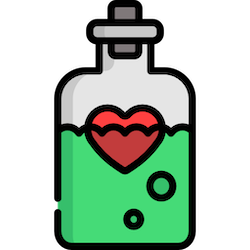A mosaic of the four seasons created by Seena (with an assist from Stuart) December 2018
Each side of the brain controls different types of thinking. The right side of the brain is the source of our intuition, creativity, and BIG picture thinking. The left side of the brain focuses on quantitative and analytical thinking. Think of your brain like two computers connected by a local area network (LAN). Both parts work for the same body and help you accomplish whatever you are trying to do. But what differs is the way in which each half approaches the task. The left half of the brain focuses on numbers and language, logic and reasoning. The right half likes to synthesize and create. The left side focuses on facts and details. The right half looks for patterns and recognizes shapes. The left side prefers the safe and practical approach. The right side is more willing to take risks.
Here’s a quick test. Look at the words below and say the color of the letters as quick as you can.
Was that difficult? If you are like me, you probably had to think really hard, ignoring your instinct to say the word! The left side of our brain is processing the sequence of letters that form the word while the right side of the brain is working to recognize the color of the letters … which in turn the left brain must translate back into the name of the color.
A Cohesive Whole 🧠
While the two sides of our brain have different cognitive strengths, they collaborate to perform a broad variety of tasks. For example, research has shown that people who perform well on math problems are strongest when both halves of the brain work together.
The pop psychology notion of a left brain and a right brain doesn’t capture their intimate working relationship. The left hemisphere specializes in picking out the sounds that form words and working out the syntax of the phrase, for example, but it does not have a monopoly on language processing. The right hemisphere is more sensitive to the emotional features of language, tuning in to the slow rhythms of speech that carry intonation and stress.
-Carl Zimmer, Discover Magazine
Thus, to be most effective at work, in relationships, and in life, it’s important to develop and strengthen BOTH the left and right sides of our brains. As pharmacists and educators, our jobs require lots of analytical thinking. Our work often revolves around written language (e-mail 😒 ), verbal communication (meetings 🙁 ), and analyzing data. So the left hemisphere of our brains get a real workout. Unlike our friends who work in creative fields, the right side of our brains probably aren’t getting the stimulation needed to stay in tip top shape. In our modern world where much of our attention is focused on processing lots of words and detailed information, creative and out-of-the-box thinking can begin to wane.
Neuroscience tell us that we can delay or in some cases reverse the process of brain deterioration by participating in activities that engage different parts of our brain. If you are right-handed, you can boost your right brain by using the non-dominant (left) side of your body to perform tasks like brushing your teeth, locking a door, and cooking dinner. Perhaps a more enjoyable way to engage your right brain would be to regularly engage in a creative hobby. A hobby can not only provide a mental escape and an opportunity to socialize with others but it can also help hone a skill. Hobbies are also a great way to disconnect from work and break away from the monotony of our everyday experiences.
If you don’t already have a hobby, consider this series of reflective questions to help you discover some hobbies you might like:
- Do you enjoy competition?
- Do you prefer working independently or with others?
- Is there a particular skill you would like to develop?
- Are you getting enough physical activity in your daily life?
- Are there things you enjoyed doing in your youth that you would like to revisit?
- Are you looking to be challenged?
- How much time can you devote?
- How much money can you invest? Some hobbies can get pretty expensive!
- What kinds of benefits would you like your hobby to provide?
💪 How to Flex Your Creative Muscle
Consider adopting a hobby that stimulates your right brain. For example:
- Dancing, yoga or other forms of physical expression (check out the Yoga Apothecary YouTube channel!)
- Reading poetry (preferably out loud) or listening to books on tape – exercises visualization and imagination
- Meditating – consider an app like Calm or Headspace
- Singing – even if it’s just in the shower or in the car (like me)
- Learning to play a musical instrument – Stuart took up the fiddle a couple of years ago!
- Painting or drawing – adult coloring books are UBER popular
- Knitting or crocheting – I have to wipe the cobwebs off my needles!
- Wood working – Stuart occasionally retreats into our garage to saw, sand, and glue
- Pottery – makes me think of the scene in the movie Ghost 🙂
- Mosaics – time seems to disappear whenever I’m working on a mosaic. I love how the broken pieces of tile and glass can be made into something new and beautiful!
Cheers-
Seena
Dr. Seena L. Haines
Professor of Pharmacy Practice
Yoga Instructor (Certified)
Health and Wellness Coach (Certified)
Chief Fitness Officer (CFO)



